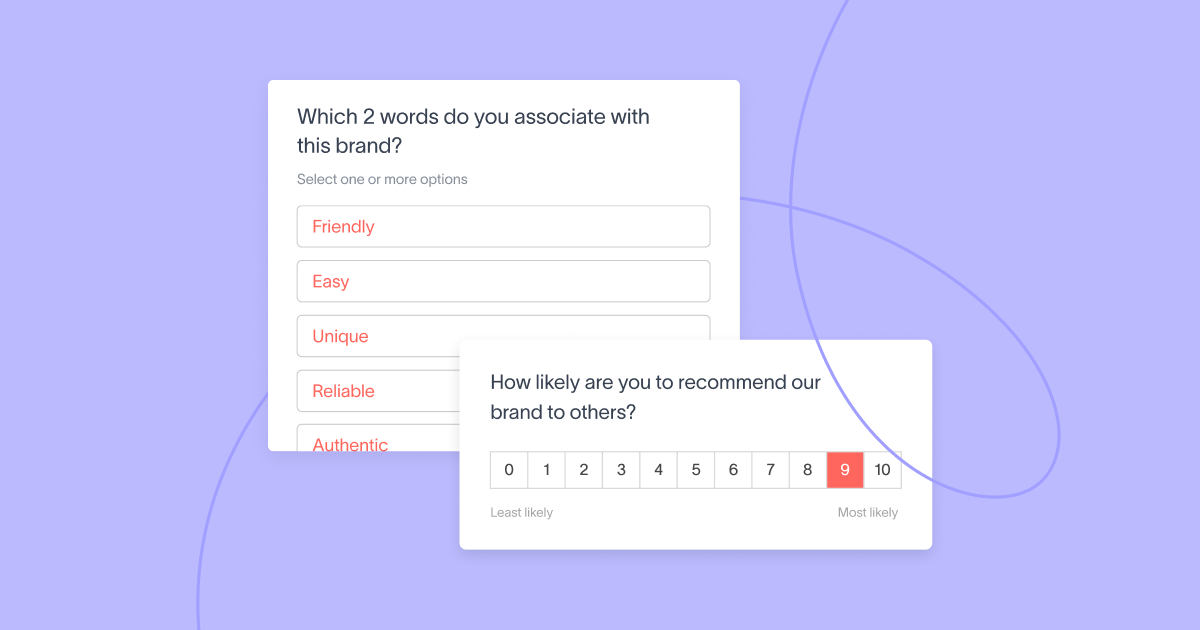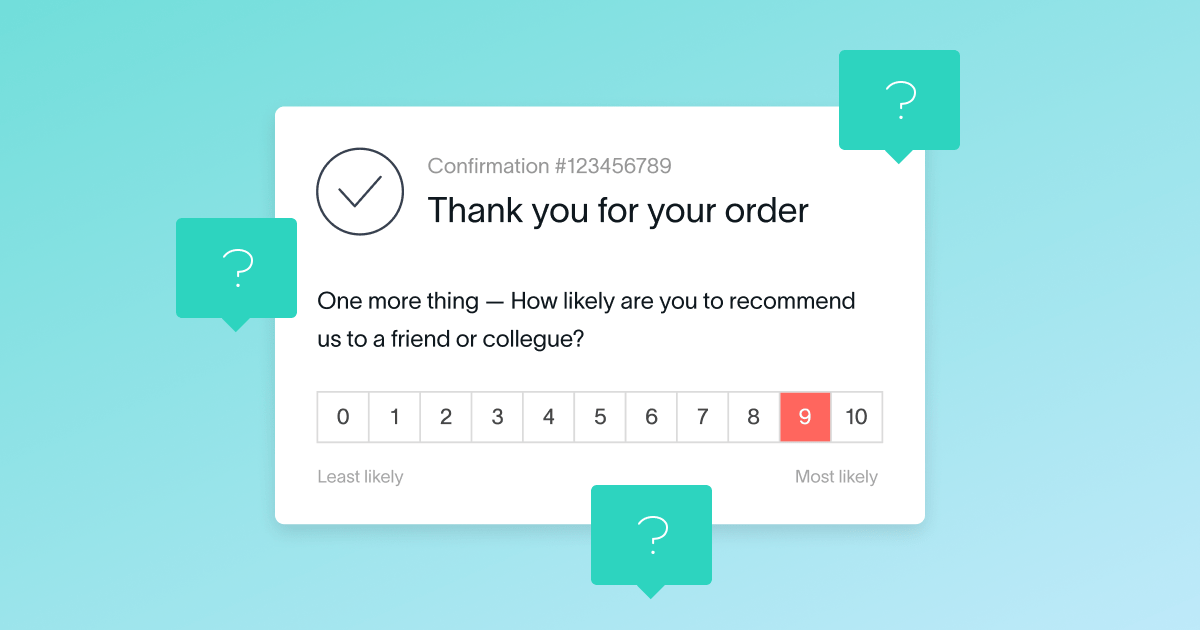Multiple choice questions are used in almost every survey: their simplicity makes surveying easier for both creators and respondents. They’re a surefire way to gather clear, concise survey data that can be easily parsed and shared. Well-crafted multiple choice questions can fast-track surveyors to actionable findings from their survey data.
Below, we cover what multiple choice questions are, types of multiple choice questions, examples, tips for writing them, and the advantages of including them in your surveys.
What are multiple choice questions?
Multiple choice questions ask respondents to choose from one or more options from a list of provided answers. These survey questions are usually either single select (one answer) or multi select (multiple answers). They’re the most common type of survey question since they’re not only easy to answer, but also produce quantitative data for the survey creator to analyze.
6 types of multiple choice questions with examples
Now that we’ve covered the definition of multiple choice questions, let’s look at the common question types you can use in your surveys with examples of each.
1. Single select multiple choice questions
Single select multiple choice questions are questions that allow respondents to select only one answer from the list of options. A popular type of survey question, single select questions are highly effective in determining a respondent’s primary preference among a set of choices.
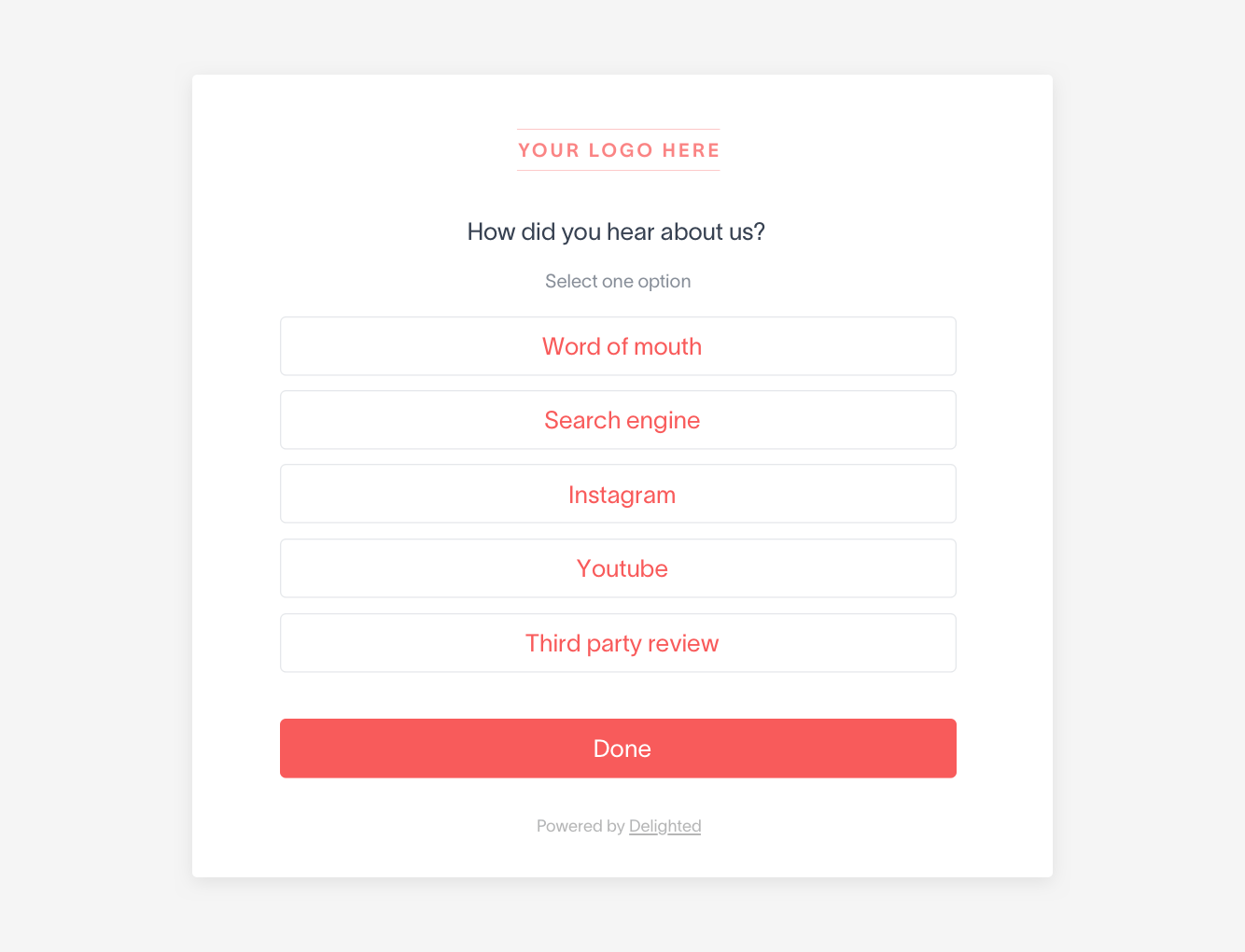
2. Multi select multiple choice questions
As a survey creator, you might want to ask questions that allow multiple answers: that’s where multiple (or multi) select questions come in. Multiple select questions give respondents the ability to select more than one answer. This may also include an “other” option in case none of the predetermined answers fit.
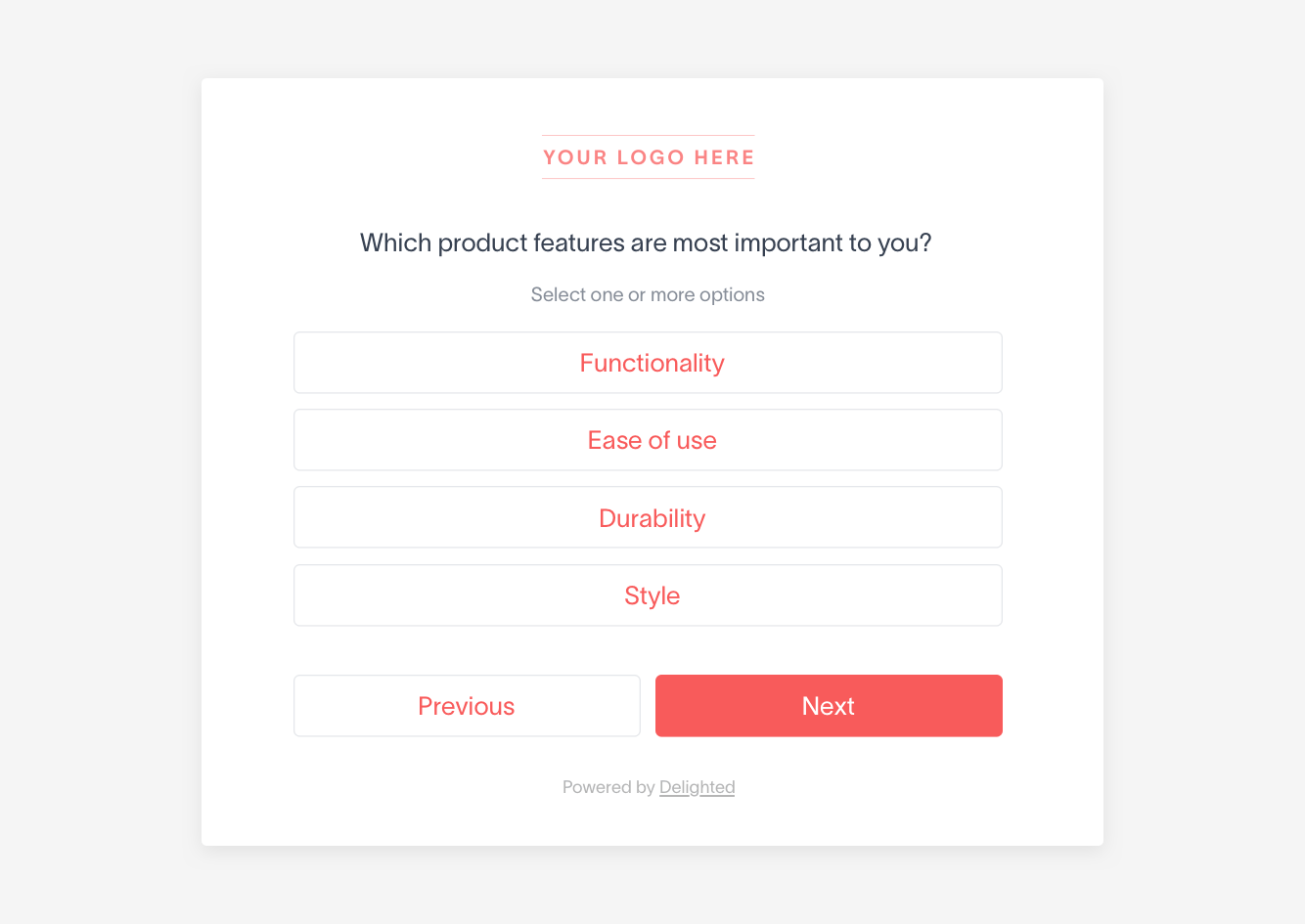
You can create your own multiple choice questions using Delighted’s free survey maker and choose between single or multi select answer options during the survey design process.
3. Star rating multiple choice questions
A star rating multiple choice question asks respondents to rate a question, usually about a product or service, using a range of 1-5 stars. The visual rating scale is universally recognized, allowing anyone to effortlessly give a response indicating a favorable (more stars) or unfavorable (less stars) experience.
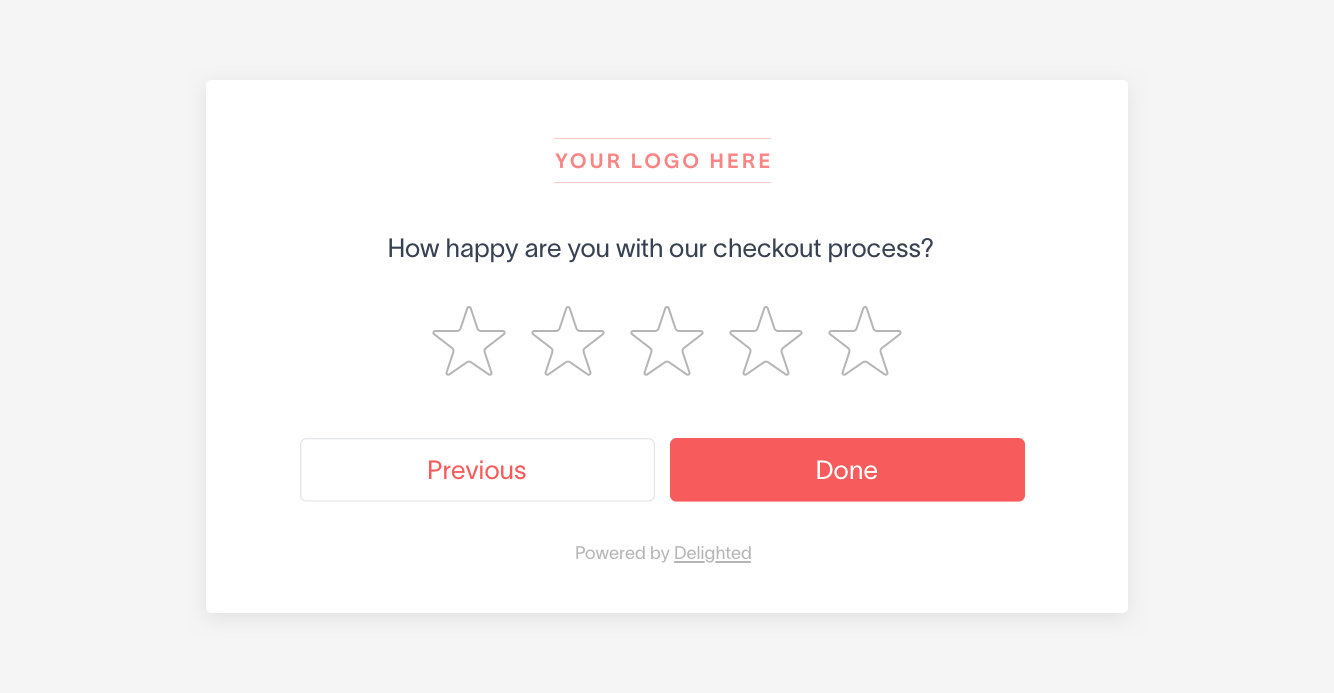
4. Thumbs up/down multiple choice questions
Thumbs multiple choice questions are a type of dichotomous survey question, meaning there are only two possible answers: thumbs up, indicating yes, or thumbs down, indicating no.
These questions are designed for fast, easy responses – perfect for straightforward evaluations. They also work well as screening questions: for example, you could ask your customers whether they’re aware of a certain product feature, and then dive deeper with a different set of questions depending on how they answer.
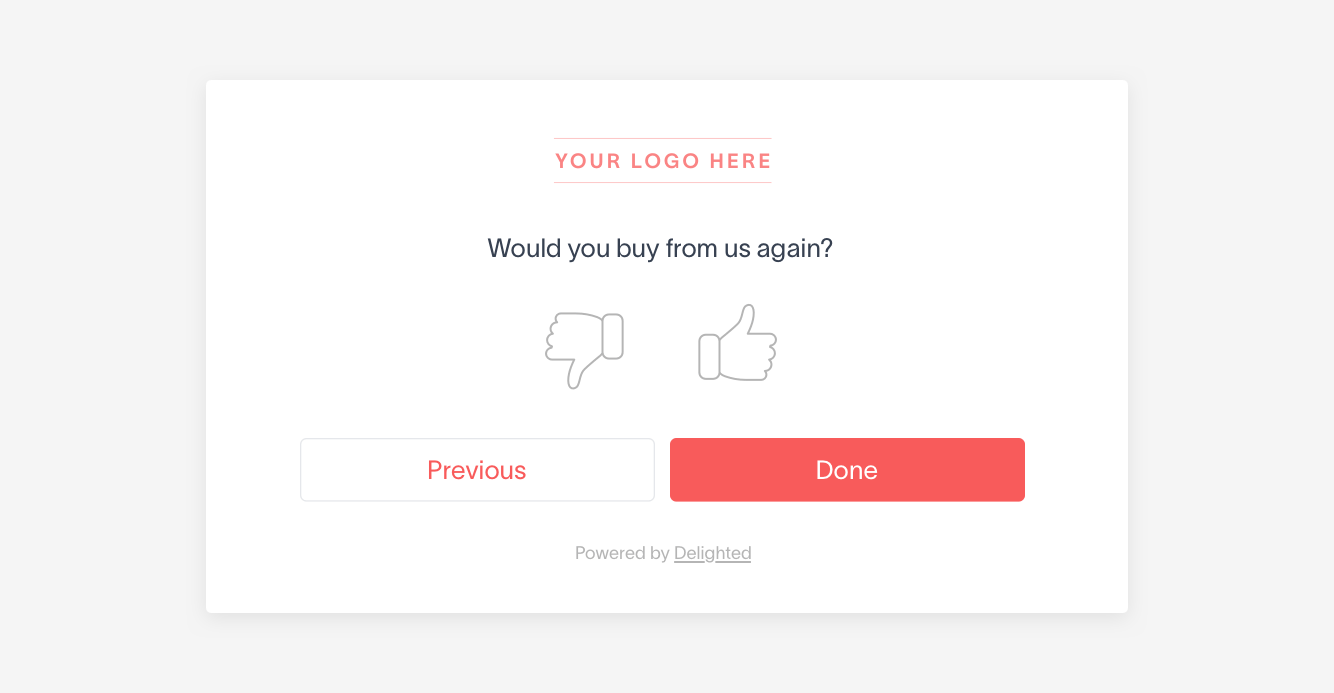
5. Smiley face survey multiple choice questions
Smiley face multiple choice questions are another type of visual survey question. They make it easy for customers or employees to select a rating because they elicit an intuitive response, i.e., they can place an emotion behind it.
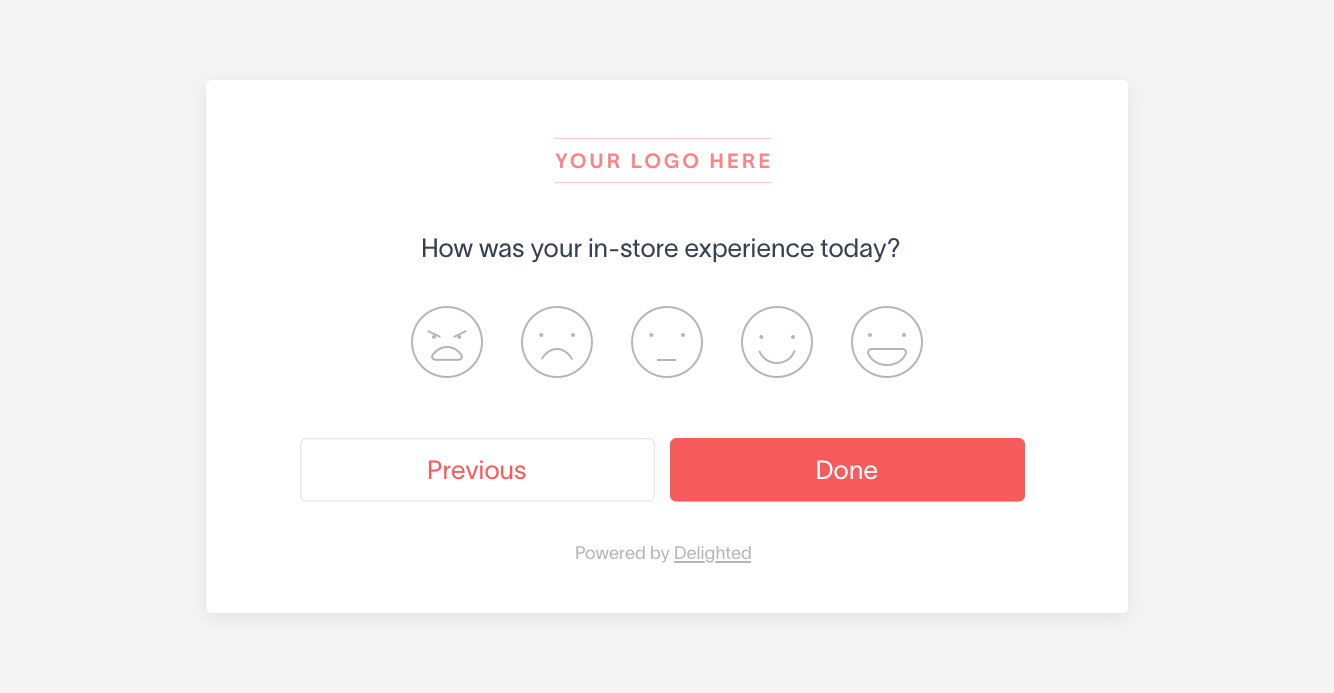
6. Numeric scale multiple choice questions
Another common type of multiple choice question is a numeric scale question, also called a Likert scale question. These can include a 5 or 7-point scale as the answer options for respondents to choose from.
Some examples of survey types that use this multiple choice question format include Net Promoter Score (NPS), Customer Satisfaction Score (CSAT), and Customer Effort Score (CES). Delighted’s customer experience solution includes options for 5-star, Thumbs, Smileys, NPS, CSAT, and CES and you can distribute these surveys via email, link, web, or in-app.
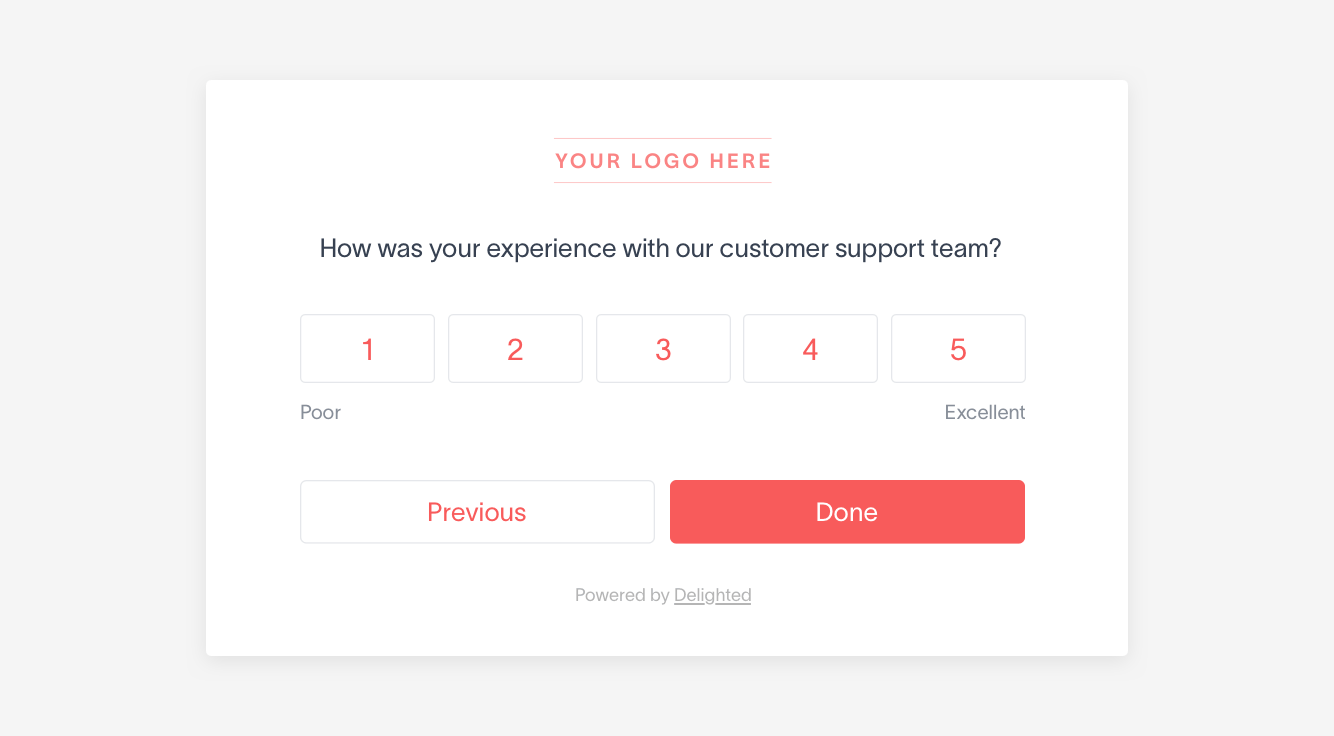
Or, create fully customizable questions using the free survey maker, Delighted Surveys, and distribute via link.
Tips for writing multiple choice questions
Want to start drafting multiple choice questions for your next survey? Use these tips to get started:
- List at least three answer options. When it comes to the number of alternatives, include at least three different options from which the respondent can choose. The only exception to this rule is dichotomous survey questions, such as Thumbs.
- Include an “other” option in case none of the choices fit. Giving respondents flexibility with an additional “other” option can decrease the likelihood they skip the question altogether if none of the provided answers resonate with them.
- Get more context on answers with open-ended follow-up questions. Want more clarity on why a respondent answered the way they did? Follow up the multiple choice question with a free response option so that respondents can explain their choice in more detail.
- Make sure all of your answer options are simple and easy to understand. If your questions are confusing, respondents may be less inclined to answer them. This can then lead to nonresponse bias – when a surveyor does not respond to your survey or survey question because they are unable or do not want to complete it – resulting in skewed or unusable survey data.
Advantages of multiple choice questions
In many ways, multiple choice questions are considered the gold standard by most survey creators thanks to their advantages over other question types.
Advantages like:
1. They’re quick and easy to answer
Multiple choice questions are useful in customer and employee surveys as they are simpler than most other types of survey questions for your audience to answer. They use the close-ended question format to get quantitative data from survey respondents. Sometimes with open-ended questions, respondents simply don’t know how to answer and it takes time for them to type out their thoughts.
You remove the uncertainty (and time spent) around the answer to the question by providing specific options – making both the respondent’s job easy and the data you collect straightforward.
2. They can reveal new insights about your products or services
Given their pointed nature, multiple choice questions are a great way to gather information about an existing hypothesis or idea. For example, they can help you make new product decisions, understand how you can improve your customer service experience, and decide where to advertise to reach your target audience. Then, you can use how your audience responded to choose the next steps in your long-term business, product, or marketing strategy.
3. They are great for collecting specific, quantifiable data
Survey creators can distill findings from large sets of data with clear-cut answer choices. There’s no room for irrelevant information since the answer options are already provided for respondents. That way, you’re able to get right to the information you need.
4. They’re optimal for mobile devices
Many respondents prefer to answer surveys right from their mobile devices, so why not make it easier for them with the simplest question-answer format? Multiple choice questions are optimal for phone and tablet users since all it takes to respond is a couple of taps.
Ready to create and customize your own survey questions? Start surveying in minutes with Delighted’s free survey maker.





